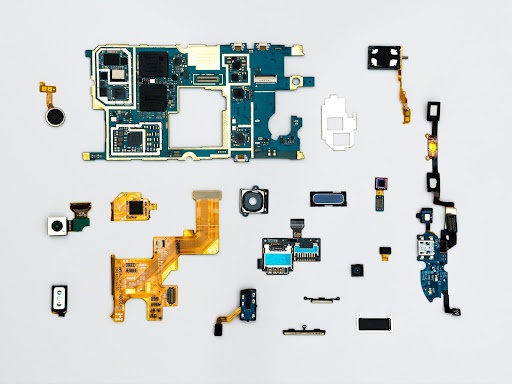
Facebook’s recent name change to Meta reflects a coming shift in the world of technology and commerce. Instead of operating within the physical reality, we’ll be operating within a virtual reality known as the “Metaverse.”
Distinct from terms like “omniverse” and “multiverse” — both of which refer to broader definitions of multiple universes in existence — “Metaverse” is a name Facebook has adopted for the universe(s) within the universe we now know.
The most well-known of these nested universes are augmented reality (AR) and virtual reality (VR). At SUBTA, we believe every subscription entrepreneur should keep an eye on this development in technology.
Read on to learn about what Metaverse developments you can expect in the near future and how you can prepare your subscription business to transition into this new virtual world.
The Current Virtual Reality
Over the years, we as a global society have been creeping more and more toward functioning in virtual worlds and environments like the Metaverse. Today, we’re just touching the surface of where we’ll be a decade from now.
Think of where we are now as living in the world of the movie “Free Guy.” People immerse themselves in virtual worlds via games like Roblox, Minecraft, Grand Theft Auto, and many more.
Right now, we enter those worlds through our screens, and we’re even starting to enter them via AR using glasses that layer the virtual world’s surroundings on top of real-world surroundings. A huge example of AR in action is Pokémon GO, which hit over 1 billion downloads in 2019, according to Pokémon’s fan site Serbii and confirmed by Game Developer.
It won’t be long before we move on to VR, which allows users to feel completely present and mobile in a virtual world. The movie “Ready Player One,” directed by Steven Spielberg, doesn’t seem as far-fetched anymore.
The whole thing does sound like it’s straight out of a sci-fi film, but it’s coming in the next decade. And as it becomes reality, we’ll start to see massive economies popping up that are built within that digital space called the Metaverse.
The total economic impact of this Metaverse is potentially 10 times larger than the current GDP, and there are no limits on how it can continue to expand from there.
What Metaverse Means for Subscriptions
With so much potential for expansion in the Metaverse, where does your subscription product or service fit in? Let’s look at a few examples of how well-known subscription businesses might adapt, then at the general trend for all subscription businesses to move toward virtual products and interactivity.
Ipsy, Rent the Runway
For a makeup subscription like Ipsy or a fashion subscription service like Rent the Runway, expanding into the Metaverse might entail the capability for customers to try on the products in the virtual world. Friend groups could try on outfits together virtually, then have the clothes that they want to buy shipped to them in real life.
This concept is great for the retail companies’ economies of scale: Because customers can try on products virtually before purchasing, they’re significantly less likely to return them. Imagine the success of a subscription box full of items that customers have already tried on and loved — the potential is massive.
Hunt A Killer
For another example, look at the popular mystery game Hunt A Killer (a 2021 Cube Awards Winner for Best Customer Experience). Perhaps, in the future, Hunt A Killer will stop shipping physical products and the entire game will simply exist within the Metaverse. Or maybe the subscription will ship you one small, tangible object (like a key) that will be impactful in this new virtual reality world.
The virtual space within the Metaverse reduces the need to spend money creating and shipping physical items while allowing unlimited expansion.

Physical to Virtual
The evolution to the Metaverse is similar to the evolution that Netflix has experienced over the years as it moved from a physical product (DVDs) to virtual streaming.
In all likelihood, many physical subscription boxes will transform into virtual boxes that are opened and used within the Metaverse. This shift reflects the continuing transition from ownership to usership as people become less interested in buying a product and more interested in simply paying to use it.
The next step is into a fully virtual experience. Imagine meeting up with friends at the Netflix theater in a virtual reality world. Just as you would in real life, you’ll walk up to the theater, sit down in seats, and interact with real people. Instead of buying a ticket, you’ll have a subscription — just like a gym membership.
It’s the best of both worlds: the old school days of hanging out with friends in person and the new school days of virtual reality. Facebook’s mission all along was connecting people and bringing people together, and Metaverse is simply the new way of doing that.
Transitioning to the Metaverse
To prepare your subscription business for the Metaverse transition, start by thinking big and broad, as if literally anything were possible. How could your business adapt to this new world? From there, scale your ideas down to one small action step.
It is likely that the first Metaverse development to come into our hands will be AR glasses. With that in mind, think about how people can use your product in conjunction with AR glasses:
- Mystery games like Hunt A Killer: AR glasses could allow users to see clues around the room they’re currently in.
- Decoration subscription boxes like Decorated: Customers could see what decorations would look like in their own homes before choosing which items to include in their monthly box. Amazon’s AR View app already allows you to do this when buying furniture.
- Wine subscriptions like Winc Wine: Bottles could be virtually tagged with customer ratings and notes. Eventually, with the development of VR spaces, consumers could enter virtual wine shops.
- Toy and memorabilia subscription boxes like Loot Crate: By expanding into the NFT space, companies could offer virtual toys and trinkets. Parents could rejoice that their childrens’ trinkets are now creating clutter in the Metaverse and not their physical bedrooms.
That last one especially isn’t far off at all. Apps such as Veve already offer virtual collectibles, and we’re only going to keep seeing more as the Metaverse expands.

As this type of technology becomes more mainstream, platforms will develop easy solutions for companies to get involved within the Metaverse. Monitor those trends and start thinking about how you can evolve your product to stay abreast of new developments.
As products and experiences shift into the Metaverse, currencies will shift as well, so keep an eye on the currencies of these new developing spaces. Cryptocurrencies will likely vary among platforms, so opening up discussions about them now will help you prepare your business for expanded revenue streams.
The Future of Connectivity
A huge draw of the subscription box industry is the surprise and delight experience of opening up the box. Within the Metaverse, you can create that surprise and delight every time users enter the virtual world — not just the one time that they open a box.
Of course, virtual reality doesn’t replace real-life experiences. But it can supplement and strengthen them. You can create endless opportunities for the connection and community that makes subscriptions last, and even regain some of the connectivity that we’ve lost from Covid-19 and the shift to remote working.


